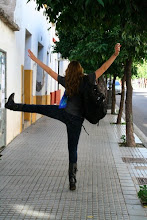Well I hate to say that once again I feel like this entry (as with the last) probably will leave more questions than provide answers. Hopefully you all may be able to help me out a bit. The second half of Leyendas de Guatemala proved to be a little less dense than the previous part, which was both disappointing and relieving; imagery in the previous part is much more evident. In the second half, the element of dialogue truly carries the plot along making for a clearer read but leaves less to the reader’s imagination. Although there are passages that I found to be very descriptive within the dialogue*, there were far less of them. I also felt as if I had more to decode in terms of what the symbolism means according to Mayan legends (I wish the index at the back was a bit more lengthy, seriously), which if anyone has some knowledge on the subject I’d be very interested to hear your commentary. I get the colors and the palace in the sky, but I’d really like to know more about the characters, significance of corn as teeth, the eyes of hummingbirds, etc.
On the flipside, the first half seemed as if it was just as much up to the reader to determine the images and sensations that Asturias creates, which is my own opinion that I could be completely wrong about, but I appreciate a bit of room for creative interpretation/reading. As confusing as it may have been a week ago, I found myself a bit bummed that I didn’t feel the dreamlike vibe this time around.
The dialogue makes the novel seem much more mythical and structured. Clearly, the myths set out to explain elements of nature and points to Mayan beliefs about natural processes, such as the sun’s trajectory across the sky, which played an essential role to this part of the text. These ideas were greatly developed with the use of color; what I really liked was how these colors were constantly brought up throughout the text, even in the most subtle ways, for example based on the different kinds of precious gems and clothing Cuculcán was dressed in. What I really kept coming back to, though, was wondering where all of these ideas stemmed from and what the Mayan ideas and attitudes were towards two main things: women and afternoon (el tiempo de la Cortina Roja). Now, forgive me if I completely missed a detail that would explain this, but firstly, the women seem to be portrayed to be a bit worthless considering the explanation of their relationship to Cuculcán and the fact that they are swallowed up by a lake and sucked to the depths past the mirror of life where they are never to be seen again after taking care of the sun god all night. Did attitudes towards women follow suit, were they secondary in society? Granted, I know Cuculcán was a god, but was there a difference in human sacrifice between women and men? Secondly, was the afternoon associated with wartime or a time of battle? I don’t know if that has to do only with this myth in particular, but I was just curious because I felt that suggestions of “warlike behavior”—for lack of a better expression—were very prevalent at this time of day. I’m thinking I’ll go back over the reading again and see what I can pull out. There may be more to read a bit later this week if I can come up with anything…
As a side note, I did like how Guacamayo was developed. I was pretty amused by this trickster with his drunken, irritable feather-fluttering and strange ‘cuác acuác cúac’s. Anyone else find it interesting to read the way different animal noises in Spanish are pronounced and how different they are from English? Call me a dork, but I found this really amusing when I was in Spain last year.

I'm on the same page - the first half was definitely more colourful. I like how you describe it as dreamlike. I hadn't though of the gender roles but you bring up a good point!
ReplyDeleteHi Megan!
ReplyDeleteI agree with you about the lack of understanding nuances and symbols in the text- the whole time I was reading I kept feeling like there were cultural cues that I was missing. And I hadn't thought of the gender roles before either. I was a bit confused, though, as to whether the women were always taken away after the night ended... I thought Guacamayo might have been trying to deceive Yaí about that, but I need to read it again to understand better.
And yeah, I have a whole list somewhere of animal sounds in different languages, I love it! :)
I agree that not as much was left to imagine in this part than the beginning, however I did like envisioning the entire the play on stage because as you said the description of the colors are so vivid. Well to comment on a comment on your page, I thought Guacamayo was using Yaí to prove that Cuculcan was a hoax but in the end Guacamyao was actually the one fooled, but who knows...?
ReplyDeleteI found I had the same problem with the symbolism in the 2nd half of the reading. There were so many different references to things that some one in Guatemala might know that most likly comes from other mythology or tradition such as the corn teeth. That made the 2nd half of the book a lot more confusing along with the fact that its in a dialogue type format so its not quite like reading a story.
ReplyDelete